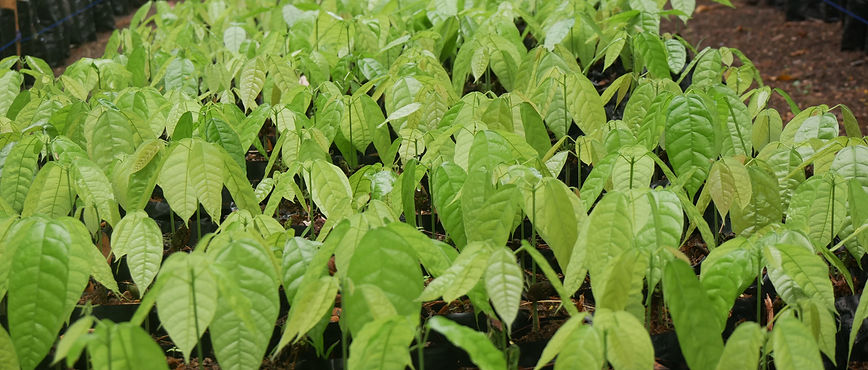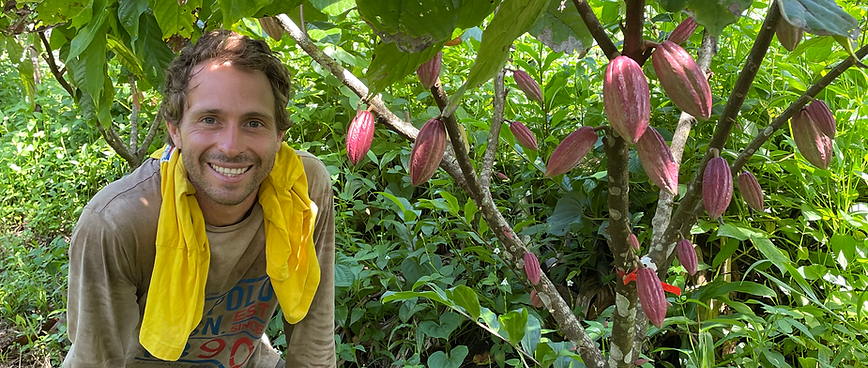
AROA is a family-run business founded in 2020 in the heart of Mo’orea. We specialize in the cultivation and transformation of organic cacao in French Polynesia. We offer high-quality artisanal products and share our passion through a unique eco-tour experience.

A TROPICAL PARADISE
Theobroma cacao – “Food of the Gods”
THE STORY OF OUR PLANTATION
Nestled in the ancient volcanic crater at the heart of Moorea, our cacao plantation was established in 2020 on what used to be a pine tree farm. After 40 years of monoculture, it took considerable effort to restore the soil’s fertility. Passionate advocates for environmentally respectful agriculture, we believe agroforestry is an effective and sustainable production system. It allows us to bring the soil back to life while increasing the biodiversity of our agricultural land. Over nearly five years, more than 50 different species have been manually planted. Carefully selected for their economic, cultural, or heritage value, these plants have helped bring a vibrant ecosystem back to life. As a recognized contributor to the development of organic agriculture in French Polynesia, our plantation is certified annually by the local organization BioFetia. During your visit to our plantation, you’ll experience the cacao journey from seed to bar and discover a wide variety of tropical trees that, we’re sure, will pique your curiosity. Among them are the very flavors that infuse our chocolates—cinnamon, coffee, coconut, combava, and more. Can you spot them? We can’t wait to welcome you!
PREPARATION

In late 2020, we planted specific pioneering species (banana trees, gliricidia, pigeon peas, vetiver, etc.) known for their ability to improve soil quality. By stimulating bacterial activity, nitrogen fixation, and organic matter decomposition, these plants help our cacao trees gradually find the nutrients they need to grow.
NURSERY

Lovingly nurtured for several months in our nursery, our cacao trees—grown from local seeds—are transplanted into the ground once mature enough. Some are grafted to reproduce and preserve specific characteristics that interest us. At this stage, the cacao tree is sensitive to direct sunlight and prefers a shaded, humid environment
GROWTH

It takes about three years for the first flowers to appear. Once pollinated, they develop into cherelles (tiny cacao pods). It then takes 5 to 6 months for the fruits to reach maturity. Due to natural hybridization, pods come in a wide variety—red, yellow, green, smooth, wrinkled, round, or pear-shaped.
PRODUCTION

Around the sixth year, the cacao tree reaches its peak production. At that point, it produces between 30 and 50 pods per year, yielding enough beans for around 2 kg of chocolate. Many of the trees in our AROA plantation produce white cacao beans (known as Criollo), which give our dark chocolate its lighter appearance.
HARVEST

Under the tropical climate of French Polynesia, there are two harvests per year—from June to September (main harvest), and from December to February. When the pods are harvested, they are opened and the beans—still covered in their white mucilage—are extracted. The beans are then fermented and sun-dried for 2 to 3 weeks. That’s when our work as chocolatiers begins: turning these beans into delicious chocolate.

